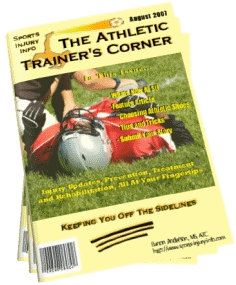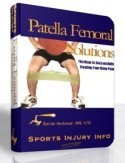Sports Injury Surgery:
Arthroscopic vs.
Open
Procedures
When it comes to sports injury surgery,
there are basically two different types of surgical approaches, either
arthroscopic or open. There are many different benefits and drawbacks
to both of these types of procedures. Understanding what lies ahead for both arthroscopic and open sports injury surgeries can help you prepare you for your surgery.
Open Procedures
Open surgical procedures involve an actual incision that opens the joint in order for repair or reconstruction of the injured structures. Open procedures are more invasive than arthroscopic procedures because the joint is exposed.Advantages:
- Stronger repairs (depending on the tissues)
- Requires less surgical skill
- Quicker return to sports
Disadvantages:
- Larger incisions and scars
- Greater chance for infection
The most common open sports injury surgery procedures include rotator cuff repairs, ulnar collateral ligament reconstructions, ankle reconstructions, shoulder reconstructions, and fracture repairs.
Arthroscopic Procedures
Arthroscopy is a less invasive sports surgery procedure, utilizing a camera and small tools to work inside of a joint. It usually involves 3-4 small portal incisions into the joint, rather than one large incision. The actual joint is not exposed to the outside world.Utilizing the arthroscope and small tools, your surgeon performs the procedure inside the joint while looking through a camera or view screen. Arthroscopic procedures have become very common, and are often done as an outpatient procedure.
Advantages
- Smaller incisiions and smaller scars
- less chance for infection
- less pain after surgery
- quicker initial recovery
- Weaker repair (depending on the tissues)
- Requires greater surgical skill
- Possible nerve damage due to use of tourniquet
Whether your injury requires an open or arthroscopic procedure is dependent upon:
- Type of injury
- Amount of damage
- Location of the injured tissues
- Surgeons skill level
- Type of procedure
Some procedures cannot be performed arthroscopically, such as ligament reconstructions and fracture repairs. Other injuries can be treated with either arthroscopy or open procedures, and will depend on your surgeon's preference and experience as to which is used.
Summary
Whether you are getting ready for an arthroscopic or open surgery, make sure that you discuss all of the advantages and disadvantages of your procedure with your orthopedic surgeon. They can answer all of your questions and give you the reasons why one procedure is better than another.Didn't find what you were looking for? Search SII for more information...
Running Pain Solutions
Written for Runners by a runner, you'll learn a holistic approach to improving mobility, restoring normal movement and muscle activation patterns, and restoring the body and mind connection.
This Kindle Book contains a step by step program to keep you running pain free. Included are detailed instructions and illustrations for exercises to improve mobility, balance, neuromuscular control, strength and endurance. Only $7.49!
Get Your Copy Today!









